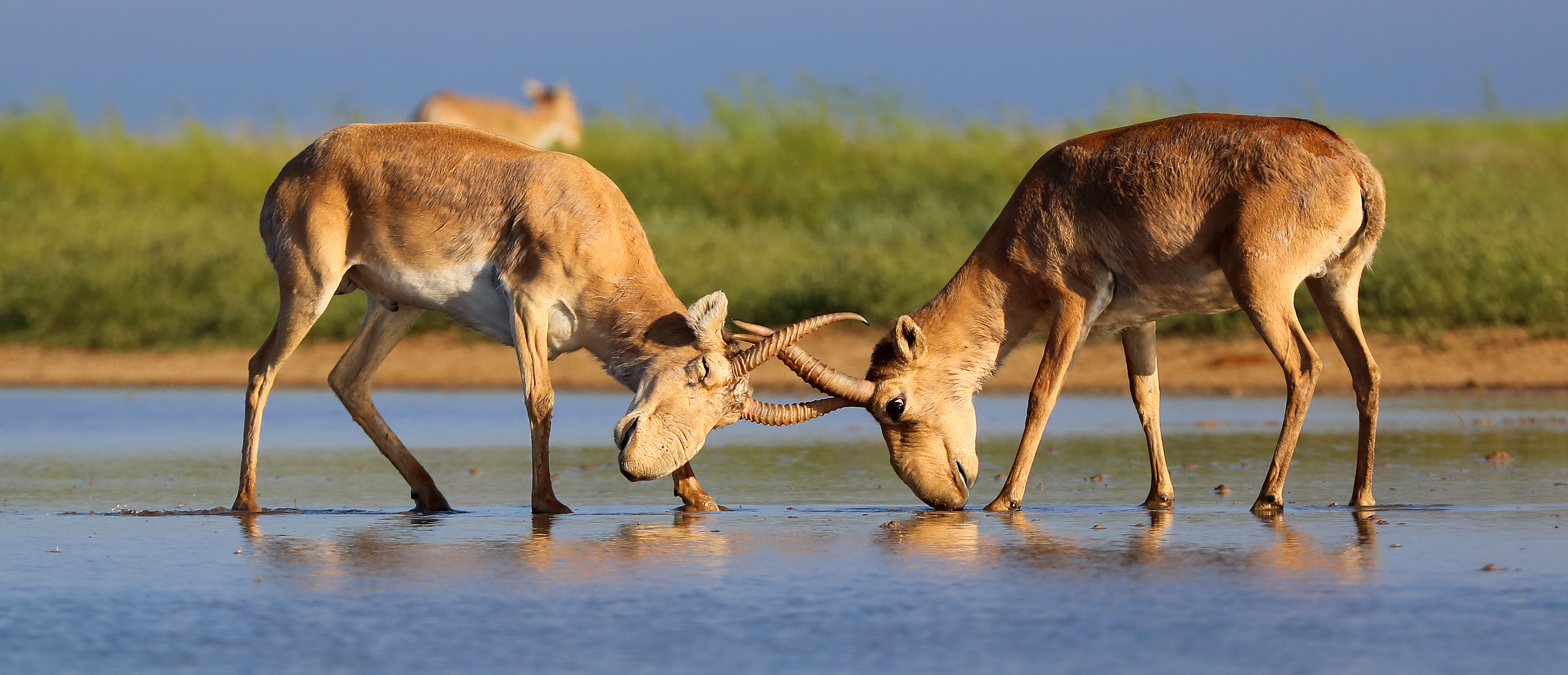In the 1990s, the saiga antelope lost 95% of its population in under 10 years across its native range of Central Asia. The species became critically endangered due to a combination of illegal hunting for its horn – exported for use in Traditional Chinese Medicine – and meat for local consumption. In 2015 it then suffered the most dramatic disease-related mass mortality ever experienced by a mammal, with 88% of the population in central Kazakhstan dying in just two weeks – this amounted to 62% of the global saiga population.
Research led by Professor E.J. Milner-Gulland in Oxford and an international collaboration team sought to understand the cause of this mass mortality. The team found it was a bacterial infection linked to abnormally warm, wet weather, and discovered this kind of mortality event was one the saiga was particularly prone to. From this work, standard procedures for disease surveillance were developed, adopted by the Government of Kazakhstan, and this informed the quick response to another mass mortality event in Mongolia just a couple of years later. The research also underpinned the 2018 re-assessment of the saiga's status on the IUCN Red List.

The next step in this work was to understand who was using saiga horn and to what extent. Along with the deeper understanding of the species’ threats from disease, this research triggered a complete ban on international trade of saiga products. The Oxford team have since implemented an evidence-based intervention aiming to change behaviour in consumers in Singapore – one of the most robust interventions to date in influencing wildlife trade consumers.
They had an innovative approach, using online advertising which drew on the understanding of their target audience that they had gained from their previous study. They also measured impacts such as pledging and encouraging others to stop using the product, as well as increased understanding about the low prevalence of saiga in the wild. With trade and poaching driven by demand, the hope is for this to support the conservation of the species in the future.
Through these efforts there has been improved awareness and media coverage of the plight of this species globally, even featuring in the BBC’s Planet Earth II. Both in-country conservation NGOs and Governmental Protected Areas within the saiga range have received substantial additional funding for their conservation work from the public worldwide, not only for direct action but also enabling public engagement.
“Our team has been working on saiga conservation for the last 30 years, which shows how important it is to stick with an issue if you want to make a difference. Over that time, the saiga population crashed by 95% and then recovered, thanks to the hard work of many people around the world – governments, NGOs and researchers. We’re proud to have played our part in supporting this recovery, through our scientific research, policy and technical advice, training of researchers, and convening of stakeholders. But it’s not over yet, and we’re looking forward to the next few years of conservation impact!”
Professor E.J. Milner Gulland
For more information about this project and the impact it has had, see the Saiga Conservation Alliance.